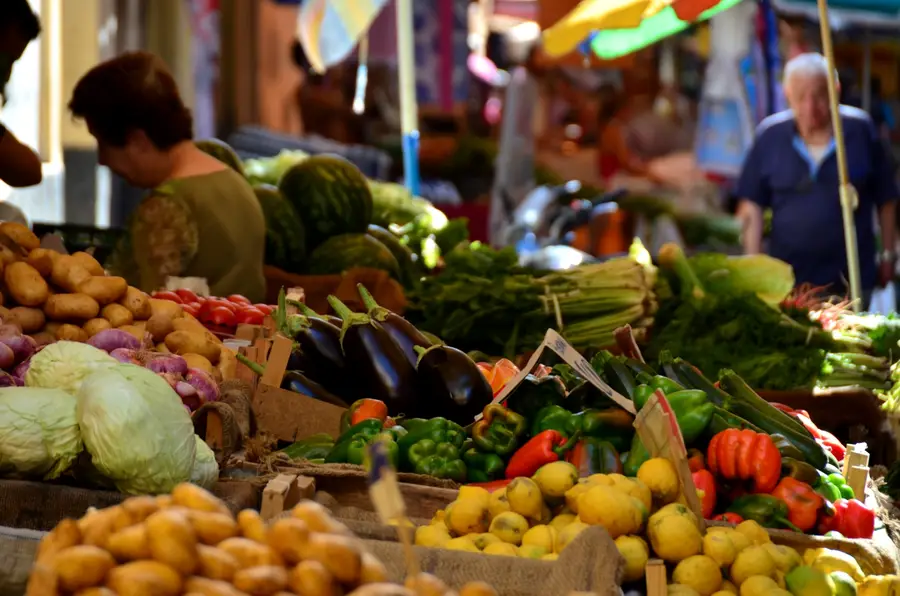Insights
Food Safety: An Imperative to Global Development
Ensuring the safety of food is a monumental challenge, and one that underlies global development progress. Food safety is critical to many of the global sustainable development goals (known as the SDGs), including zero hunger, good health and well-being, economic growth, and partnerships. The World Health Organization has also recognized food safety’s importance and adopted a global strategy for it in 2022.
Threats to food safety are diverse and ever evolving. Contaminated food causes over 200 diseases worldwide, and more than 600 million people get sick from eating contaminated food every year, 40 percent of which are children under 5 years old. Most of these cases are preventable.
Climate change is significantly increasing these threats as temperatures rise and extreme weather becomes more frequent. Resulting issues like power outages contribute to the challenges of safely producing, harvesting, transporting, and storing food. Countries can prepare for the unexpected by proactively addressing food safety risks across the food chain.
In this blog, we highlight some of the major food safety risks and how governments and their partners can address them, especially in under-resourced areas.
What food safety risks are out there?
Wherever there is food, there are food safety risks. Among these risks are microbial and chemical contaminants, which affect under-resourced areas and children the most and can cause irreversible health and behavioral effects, hospitalization, or even death.
Microbial contaminants include bacteria, viruses, and parasites that can contaminate food at any step of the food chain. For example, in areas that lack clean water and sanitation, water used for irrigation and to wash produce like fruits and vegetables can become contaminated with harmful organisms that, in turn, contaminate food. These pathogens may also come from animals and the environment. Further, the lack of proper refrigeration allows these harmful organisms to grow, increasing the opportunities for food poisoning.
Efforts to improve nutrition during the critical 1,000 days from pregnancy through a child’s second birthday often focus on access to foods that are free from microbial contaminants, but chemical hazards can also cause lifelong health effects for children. Chemical contaminants like lead may be accidentally added to food by contaminated water, spices, and cookware. The U.S. Agency for International Development recently called for a global effort to eliminate toxic lead, noting that lead poisoning kills more than 1.6 million people each year – more than HIV and malaria combined – and may also account for one-fifth of the educational gap between rich and poor countries.
Food can also be contaminated by toxins like aflatoxins, which are produced by naturally occurring fungi under specific conditions like hot temperatures, and synthetic chemicals like pesticides and PFAS (poly fluoroalkyl substances also known as "forever chemicals"). RTI recently helped identify over 16,000 types of PFAS. Many are used in a wide variety of food packaging, coming into direct contact with many of the foods eaten every day.
Climate change is substantially exacerbating these food safety concerns. Extreme heat increases food safety risks, especially in areas without refrigeration, which makes it harder to prevent the growth of microbial contaminants. Warmer temperatures and droughts can increase the production of aflatoxins in harvested crops. Warming seawater is leading to toxin-producing algae that contaminate ocean products like seaweed and increase foodborne illnesses caused by Vibrio species. Heavy rains and flooding help spread pathogens from sources like sewage and animal waste onto agricultural lands. Additionally, extreme weather affects water, food, and energy resources and reduces their quality, including the nutritional content of food.
Why does addressing global food safety matter?
Food safety is a matter of public health and intrinsic to One Health as it supports the health of humans, animals, plants, and the environment. It also reduces the burden of disease on health centers and budgets. Further, by improving food safety and preventing foodborne illnesses, countries can reduce the use of antimicrobials and help slow down the development of antimicrobial resistance, another major public health issue.
Food safety is also a matter of economic growth. Low- and middle-income countries lose around $110 billion each year in lower productivity and higher medical costs from unsafe food. Better food safety practices can also reduce food loss and waste, increasing the income of everyone in the food chain, from producers to processors to consumers. When countries can ensure safety in their food supplies and meet international standards, they are likely to gain more access to markets, including regional and international ones. Safe food supplies also ensure children can grow up healthy and reach their full potential, benefiting entire economies.
How can countries address food safety risks?
Managing food safety risks across the food chain is key to ensuring food safety. It requires every actor in the food chain – from governments, industry, producers, retail, and consumers – to work together to reduce these risks and keep people safe. This includes identifying and prioritizing specific food safety hazards, communicating across food chain actors, and mitigating these hazards.
Governments are well-placed to coordinate these joint efforts and provide leadership that enables everyone to do their part. They can support the adoption of good agricultural practices among farmers through policies and extension services that encourage proper handling of sources of contamination. This is particularly important for nutritious foods like fruits, vegetables, milk, peanuts, and eggs to ensure they have the intended effect of improving children’s nutrition and food security rather than hurting it further by making them sick. Supporting sustainable agricultural production in rural areas that empowers smallholder farmers, reduces poverty, and promotes gender equality can also boost food safety.
Governments can also support better processing, packaging, and handling among food processors through the implementation of good manufacturing practices and hazard analysis of critical control points. Many food processors in low-income countries are micro, small and medium-sized enterprises and they face unique challenges in developing food safety plans, adopting new technologies and practices for food safety and need tailored support to do so. Technical assistance and infrastructure are key as they enable the implementation of sustainable food safety practices.
Governments also need strong surveillance systems to detect and respond to outbreaks and monitor hazards over time to see if their management and policies are working to protect public health. These systems can also generate data to inform hazard analysis, prioritization, and guide research efforts.
Governments and their partners can also communicate clearly and consistently with people about food safety risks, how to mitigate them, and the importance of safe food. Household and market-level practices can undermine safe food. Social and behavior change (SBC) around food handling can be difficult, as much of it is steeped in beliefs, traditions, and social norms, so innovative and culturally relevant approaches are needed to help people understand food safety risks and how to address them. SBC approaches can also support consumers, vendors, and market actors in increasing demand for safe, nutritious food.
Addressing food safety risks, especially in under-resourced areas, requires a multidisciplinary approach and a mix of high- and low-tech solutions. In some cases, risk assessment models and other technologies are needed to help governments understand risks and make informed decisions. In other cases, more basic changes are needed, like increasing handwashing among a community before they handle food. RTI understands this spectrum and provides both high- and low-tech solutions based on a country or community’s needs.
Safer food for everyone
Proactive management of food safety risks can help countries and people prepare for the unexpected, especially as climate change exacerbates risks and introduces new ones.
Under-resourced areas are particularly affected as they often lack strong surveillance systems, clean water, refrigeration, and other technologies that can help monitor and reduce food safety risks – and are often the most affected by climate change. By providing culturally relevant, tailored, and sustainable solutions that work for businesses, producers, and consumers in low-income countries, we can help them overcome barriers to safe food and improve their resilience to climate change’s impacts and spear economic development.
Better food safety will help the world achieve the sustainable development goals – from making food security and zero hunger more possible to improving nutrition and health, reducing costs and loss, and boosting economic growth, to name a few. It will also help ensure that children everywhere – regardless of income status – have the best chance at a healthy life.
Disclaimer: This piece was written by Juliana Ruzante (Research Public Health Analyst), Meghan Anson (Senior Food Security and Nutrition Advisor), and Jennifer Hoponick Redmon (Senior Director, Environmental Health and Water Quality) to share perspectives on a topic of interest. Expression of opinions within are those of the author or authors.





